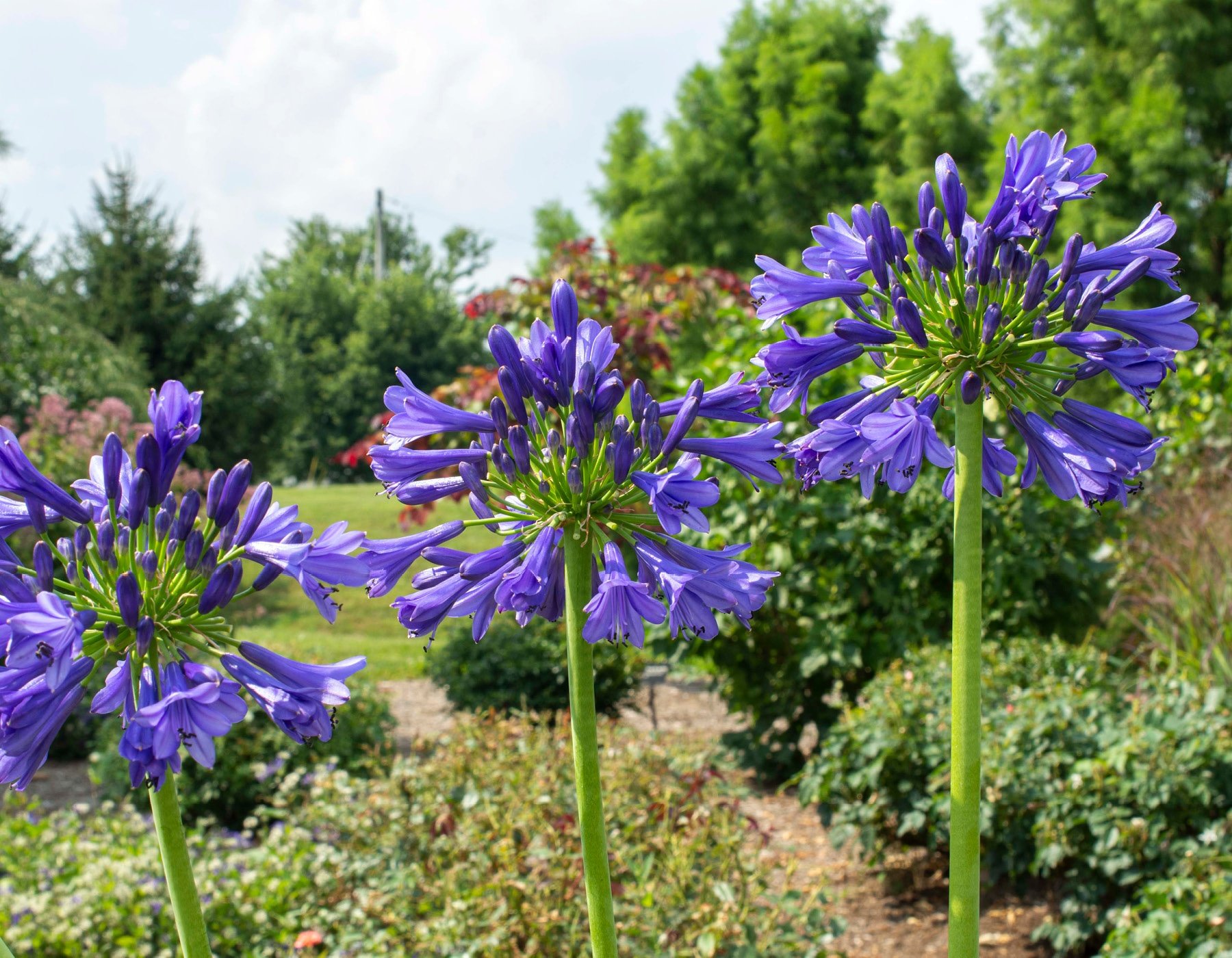Agapanthus Propagation: Tips for Expanding Your Plant Collection
Agapanthus Propagation: Tips for Expanding Your Plant Collection
Blog Article
Grasping the Art of Agapanthus Treatment: Essential Steps for Healthy And Balanced Development and Vivid Blooms
In the realm of gardening, the cultivation of agapanthus stands as a rewarding endeavor for those who look for to support these elegant flowering plants. With their striking blooms and graceful foliage, agapanthus has actually caught the interest of gardeners worldwide. However, achieving optimal growth and vibrant blossoms needs a nuanced strategy that incorporates numerous vital steps. From selecting the best variety to grasping trimming methods, the journey towards cultivating thriving agapanthus plants is multifaceted and holds the key to opening the complete capacity of these organic gems.
:max_bytes(150000):strip_icc()/agapanthus-growing-guide-7368912_04-66a3f4cf245b4332b28954dd37c784f5.jpg)
Choosing the Right Agapanthus Variety

When selecting the best Agapanthus variety for your yard, consider factors such as environment viability, blossom shade, and development practice. In addition, consider the environment in your region to ensure the Agapanthus range you select can prosper in your details problems. Comprehending the growth routine of different Agapanthus selections is essential for appropriate placement within your garden.
Ideal Planting Problems
Taking into consideration the optimum environmental demands is necessary for effective Agapanthus farming. Agapanthus plants are delicate to cool temperature levels and should be secured from frost throughout winter season months.
To make certain healthy and balanced growth and lively blossoms, plant Agapanthus bulbs at a depth of regarding 2-4 inches and area them 8-12 inches apart. Mulching around the base of the plants aids retain dampness and reduces weed development.
Watering and Feeding Tips
Preserving appropriate wetness degrees and giving essential nutrients are key elements in the treatment routine for Agapanthus plants. When it comes to watering Agapanthus, it is vital to strike an equilibrium. These plants choose regularly wet soil however are vulnerable to root rot if overwatered.
Feeding Agapanthus is crucial for advertising healthy growth and respected blooms. Apply a well balanced plant food, such as a 10-10-10 formula, in the very early spring as brand-new growth arises. Repeat this application every 6-8 weeks throughout the growing season. Prevent excessive fertilizing, as it can lead to lush vegetation at the cost of blooms. Always adhere to the maker's guidelines for proper dilution and application methods. By following these watering and fertilizing tips, you can ensure your Agapanthus plants grow and create lively, long-lasting blossoms.
Pruning Methods for Agapanthus
Trimming Agapanthus plants at the ideal times and with proper strategies is critical for keeping their wellness and promoting ideal growth and flowering. The ideal time to trim Agapanthus remains in late wintertime or very early great post to read springtime before new growth arises. Begin by removing any yellowing or dead fallen leaves near the base of the plant. Cut them as close to the ground as possible without harming the arising shoots.
Deadheading spent flowers can likewise reroute the plant's energy right into producing more blossoms instead than setting seeds. If you want to collect seeds for propagation, leave some blossoms to mature and dry on the plant.
Remember to utilize tidy, sharp tools to make specific cuts and minimize the danger of introducing conditions. Agapanthus. Routine pruning will certainly aid keep your Agapanthus looking neat and healthy and balanced while making sure a bountiful display screen of stunning blossoms
Handling Common Pests and Diseases
After ensuring correct trimming techniques for Agapanthus, it is vital to address typical bugs and diseases that can affect the health and vigor of these plants. One common insect that influences Agapanthus is the Agapanthus useful link gall midge.
An additional typical issue is fungal leaf place, which offers as dark lesions on the leaves. To avoid fungal diseases, make sure excellent air flow around click here to find out more the plants, avoid overhead watering, and get rid of any infected leaves without delay. Additionally, Agapanthus plants can experience origin rot if they are grown in poorly draining soil. To stop this, plant Agapanthus in well-draining dirt and avoid overwatering. By being alert and taking timely activity versus pests and diseases, you can aid your Agapanthus plants grow and generate vibrant blooms.

Verdict
To conclude, understanding the art of agapanthus treatment entails picking the ideal variety, providing suitable planting problems, appropriate watering and fertilizing, ideal trimming techniques, and addressing common bugs and conditions. By adhering to these essential steps, you can ensure healthy and balanced growth and vibrant flowers for your agapanthus plants. Keep in mind to frequently monitor and maintain your plants to promote their total well-being and longevity.
To make sure healthy development and vivid flowers, plant Agapanthus light bulbs at a depth of regarding 2-4 inches and space them 8-12 inches apart. By adhering to these watering and fertilizing pointers, you can ensure your Agapanthus plants grow and produce vivid, resilient blooms.
One typical parasite that affects Agapanthus is the Agapanthus gall midget. Additionally, Agapanthus plants can suffer from root rot if they are grown in improperly draining pipes soil. By following these crucial steps, you can make sure healthy and balanced growth and vibrant flowers for your agapanthus plants.
Report this page